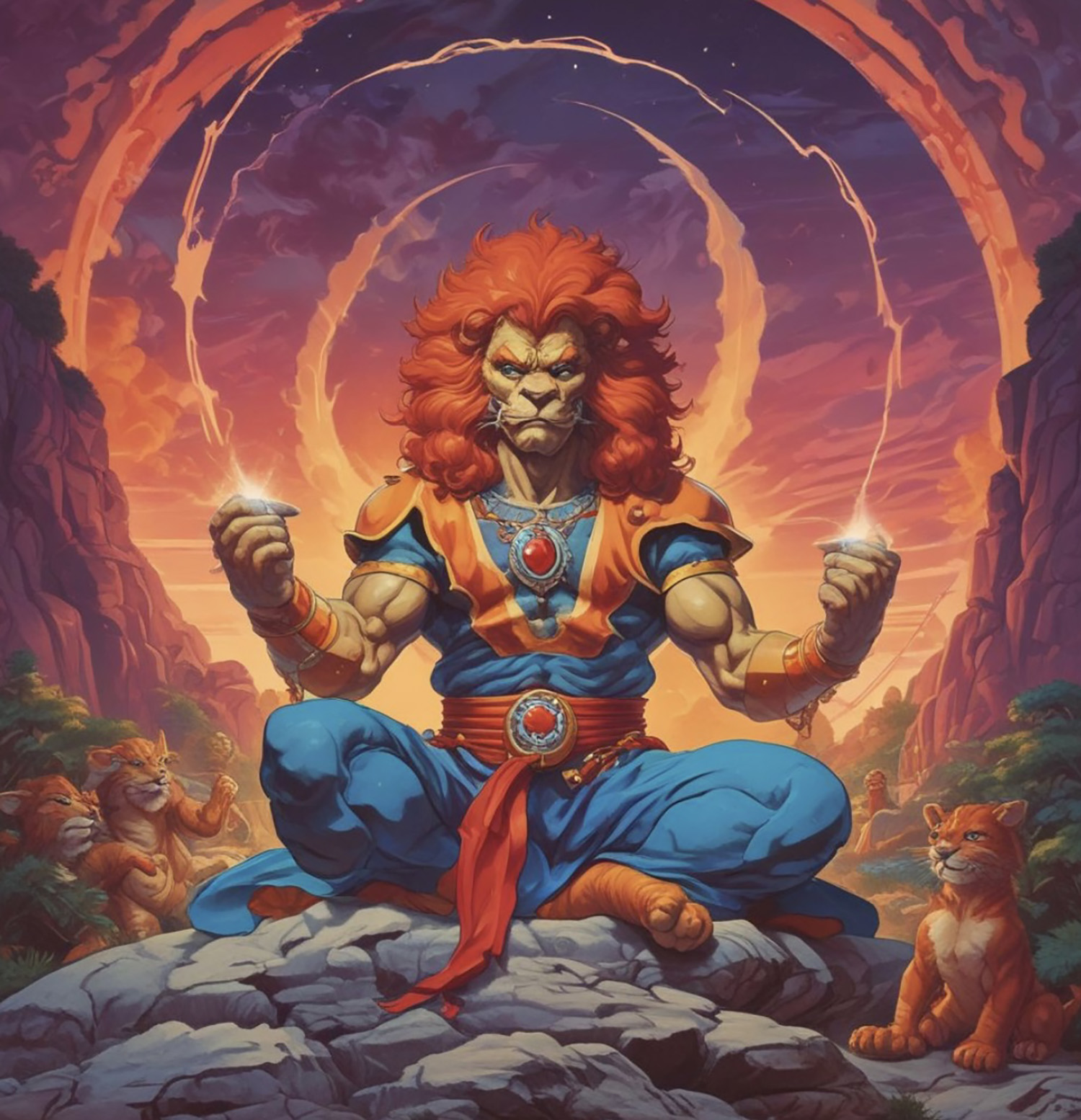Professor Berendt Examines Felines, Extraterrestrials, and ThunderCats in Latest Publication

When Adjunct Professor of Religion Dr. Tom Berendt earned his PhD in Religious Studies from Temple University, his research focused on bovine veneration, or cow worship, across cultures from India and Africa to Celtic traditions and North America. However, his latest scholarship reaches far beyond Earth.
Berendt recently published the article “Feline Divinanimality: Starseed Soteriology and Lyran Ontology” in the journal Transdisciplinary Theological Study: Animals, Divinanimality, and Creaturely Theology. This research examines feline divinanimality, the idea of cats as sacred or celestial beings, and how that connects to a growing online belief system centered on “Lyrans,” feline-humanoid aliens believed by some to be humanity’s ancestors and saviors.
The article, which builds on his background in animal and religious studies, explores how these beliefs intersect with KidCore, a type of nostalgia for childhood aesthetics, specifically from the 1980s and 90s.
“I wrote a paper on KidCore and presented it at a conference, and as I was doing this research, the craziest thing came up,” he explained. “The cartoon ‘ThunderCats,’ which I used to watch in the 80s, is interpreted as an implicit metaphor for a ufology religion. The argument is that this cartoon, ‘ThunderCats,’ has the same narrative, the same origin of being as the starseed tradition, which is the idea that humans have an alien soul in connection with another type of alien. One of these forms of aliens is called the Lyrans, and they are feline humanoid aliens, and their storyline is just remarkably similar to the ThunderCats.”

Berendt’s work situates ThunderCats within broader traditions of fiction-based religion, movements that draw spiritual meaning from popular media, similar to how Jediism emerged from Star Wars.
“As an academic, my intention is not to make people believe in anything,” he explained. “My intention is to get people to have a discussion around a religious phenomenon. Once there are real things that people believe in, there is an opportunity for people to research them and to talk about them.”
This publication also serves as a foundation for a chapter in Berendt’s forthcoming book, “KidCore Spirituality and the Charisma of Cartoon Religiosity,” set to be published by Bloomsbury Academic Press. The book will dive deeper into these themes and explore how cartoons such as Care Bears, SpongeBob SquarePants, and He-Man express and inspire spiritual meaning in contemporary culture.
“Nearly every cartoon creates its own mythology in order to entice people,” he said. “Children want the hero’s journey replicated again and again. They want some form of reward, some form of utopia. This is what I’m looking at in my book, the intentional inclusion of religious ideas and mythology in cartoons in order to sell a product, and to create an effective narrative.”
Although it is a departure from his previous work, Berendt takes pride in the opportunity to spearhead this new and growing area of study.
“I think everyone has to ask themselves the question, ‘To what degree am I adding or doing something relevant to promote or build upon the human endeavor?’” he said. “So I certainly feel a sense of pride that I’ve been successful in publishing something unique, on a subject that had not been explored academically as of yet. So, beyond the achievement of publishing, being recognized, and having the opportunity to be read, I think also to be at the forefront of a new area of study really feels like an accomplishment.”

